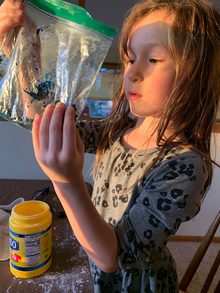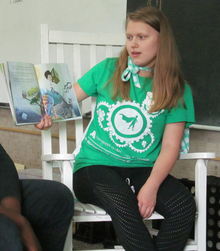With partners across U.S., Minnesota 4-H launches innovative program to make youth part of the solution to plastic pollution
Think about the power the Great Lakes show us. Beams of light bouncing off blue waters. Waves crashing against rocky shores.
What we don’t see is the Great Lakes’ vulnerability as 22 million tons of plastic enter their waters each year, threatening both their ecosystems and those well beyond their shores. The lakes are just one example. Plastic pollution threatens waters, soils and animal life everywhere, from our backyards to the world’s oceans.
Better ways with plastics
A new 4-H program developed at University of Minnesota Extension empowers young people to be part of the solution. Called Green Superheroes of Science, 4-H teens teach science concepts to elementary school-aged youth.
Experimenting with ooey-gooey plastic, discovering how to reuse existing plastics and developing plastics from biodegradable materials all combine for fun and learning.
“We help young people learn about what they can do at home, how science is creating plastics that don’t harm the environment and how they can help communities,” says Extension educator Anne Stevenson.
Stevenson reached out to the National Science Foundation’s Center for Sustainable Polymers (CSP) at the University of Minnesota. The CSP, as it turned out, was looking for an outreach and education partner. CSP and Stevenson built a national partnership with Extension educators at Cornell University and the University of California–Davis, which developed the 4-H Sustainable Polymers curriculum for grades K-8.
“It was the start of a great partnership,” Stevenson observes. “4-H fit the bill perfectly because we’re in all 50 states.”
Youth lead youth
Minnesota teens helped create the Green Superheroes program. Samantha Hamm, 13, from Anoka County, is gaining experience and new knowledge.
“I knew some plastics are bad and hurt the environment. What I didn’t know is that there are a lot of ways people are trying to make plastics with bioproducts,” says Samantha.
The 4-H model emphasizes older youth learning and then teaching younger kids, something Samantha particularly enjoys. “I’ve been really excited to teach kids and get them to ask, ‘What can I do in my environment?’”
For Extension’s partners at the University of Minnesota, the 4-H curriculum contributes to the long-range thinking needed to craft solutions to problems the magnitude of plastic pollution.
“We see our partnership with Extension and 4-H as an opportunity to reach the next generation of scientists,” says Laura Seifert, managing director of the CSP. “These are big challenges and they will not be easy to solve.”



